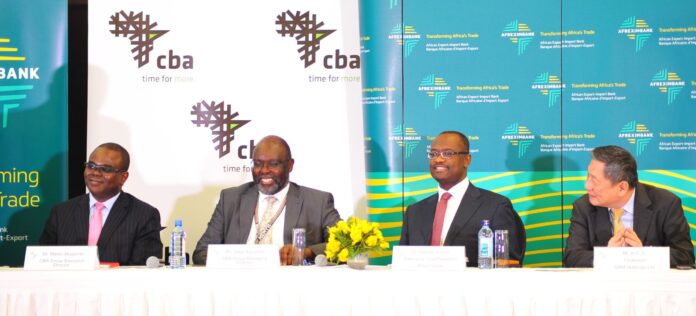African Export-Import Bank’s (Afreximbank) has said that Africa can make economic gains of US$17.95 billion in welfare, 3.15% average growth in GDP, export growth of 5.25%.
The 2018 report, ‘Boosting Intra-African Trade: Implications of the African Continental Free Trade Area Agreement’ also said Africa’s import growth volumes will rise 6.59% if it eliminates tariffs on all trade and reduces non-tariff barriers (NTBs) in intra-African trade.
The report points out that the best option for African countries to gain economically is complete tariff removal on all trade and a reduction in NTBs.
NTBs refer to restrictions that result from prohibitions, conditions, or specific market requirements that make importation or exportation of products difficult and/or costly.
“If Africa were to only eliminate tariffs, the continent could experience sluggish GDP growth and decline in total welfare gains as per the African Continental Free Trade Area Agreement (AfCFTA)’s ambition to free up trade, deepen intra-African trade and regional integration.’’
Afreximbank carried out the study to determine how policy options and measures can ensure the successful implementation of the AfCFTA.
It found that under Policy Scenario 3 (complete tariff removal on all trade and a reduction in NTBs), gains are higher than in Policy Scenario 1, which has the option of only removing tariffs, while Policy Scenario 2 concentrates on only removing agricultural tariffs and Policy Scenario 4 complete tariff removal on all trade and less reduction in NTBs.
However, the report analysis indicates that there can be a net gain from intra-African trade under the AfCFTA, but gains are not evenly distributed across the continent because of differences in GDP, growth patterns and allocation efficiency in investment.
In the case of Southern Africa, complete tariff removal on all trade and a reduction in NTBs for intra-African trade could economically benefit Zambia, Malawi and Namibia whose GDPs could grow by 10.16%, 7.12% and 5.82%, respectively, according to Afreximbank.
Southern Africa’s trade is currently dominated by international trade in raw materials, with ores and metals making up the highest percentage in the export goods basket, while the lowest percentage of exports is in finished (manufactured) goods.
For the majority of SADC member states, the main export destinations are China, India, the United States, France, Germany, Italy, Belgium and the Netherlands, with South Africa being the only exception as a dominant trading partner for other SADC countries.
This information, provided by the United Nations Conference on Trade and Development’s Maritime Profile (2017), indicates that most of SADC countries do not trade with each other and do not add value to their raw materials for export. Only three SADC member states export most of their products in finished form.
The three SADC countries are Lesotho, which leads with 67% of exports in manufactured goods, followed by Mauritius (53%) and South Africa (42%) in the export of finished goods.
ESwatini, the Democratic Republic of Congo and Zambia export over 70% of their products in raw form – mainly in ores and metals.
When it comes to the export of food, Malawi leads the SADC pack with 75% for export in product groups, followed by Comoros (66%), Seychelles (64%) and Zimbabwe (46%).
This reveals that significant challenges in trade lie ahead not only in southern African countries but also in intra-African trade, which is also congruent with Trade Finance in Africa Survey Report by the African Development Bank Group published in September 2017, which revealed that compared to other regions of the world, Africa’s trade is still dominated by international trade.
In 2014, the European Union accounted for 63% of total trade, North America (50%) and Asia (52%), while Intra-African trade only accounted for 15% of overall trade in the same year.
Source
https://southerntimesafrica.com/site/news/remove-tariffs-on-all-trade-afreximbank
Afreximbank lists Africa’s gains in trade
RELATED ARTICLES




